Premium Only Content
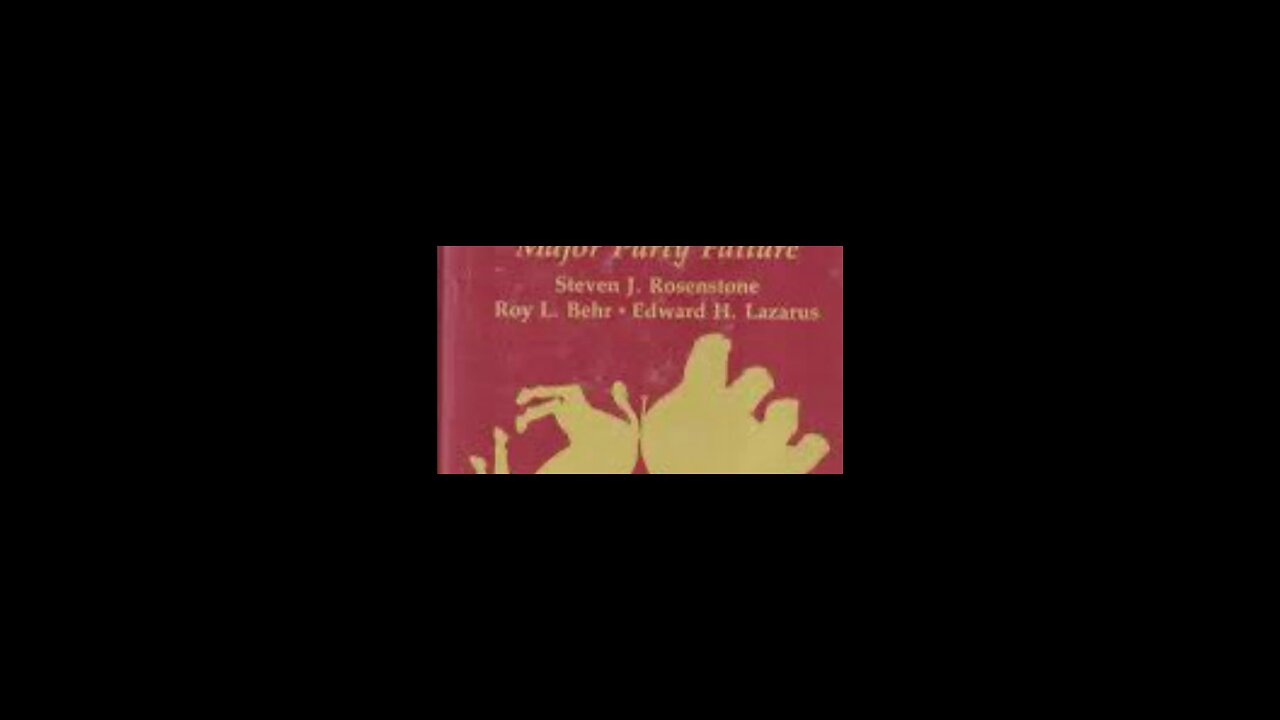
History of Third Parties in the United States
Friends, faculty, and fellow students,
Today, I want to talk about something often overlooked in our study of American politics: the enduring, and often surprising, story of third parties. We typically think of our political landscape as a two-party system, a constant tug-of-war between Democrats and Republicans. But this isn't the full picture. Beneath the surface, and sometimes erupting into national prominence, a rich tapestry of third parties has woven itself into the fabric of American history, pushing boundaries, shaping debates, and sometimes, even changing the course of the nation.
Our journey begins, perhaps surprisingly, even before the formal two-party system solidified. The very first American political factions, the Federalists and Anti-Federalists, were less "parties" as we know them and more temporary alliances forged around the Constitution. Yet, even then, dissenting voices emerged. The Anti-Masonic Party in the 1820s, for instance, wasn't just a quirky blip; it was a response to anxieties about secret societies and an early example of a single-issue movement gaining traction. This era also saw the rise of the Know-Nothing Party in the 1850s, fueled by anti-immigrant sentiment, which briefly became a major force, demonstrating how quickly a third party can capture public imagination during times of social upheaval.
The mid-19th century was particularly fertile ground for third parties, driven by the escalating crisis over slavery. The Liberty Party, founded in 1840, was one of the earliest purely abolitionist political organizations, advocating for the immediate end of slavery. While they never won national elections, their unwavering stance helped to shift public opinion and lay the groundwork for later, more successful anti-slavery movements. Then came the Free Soil Party in 1848, a broader coalition opposing the expansion of slavery into new territories. Their slogan, "Free Soil, Free Speech, Free Labor, and Free Men," encapsulated a powerful ideology that resonated with many. While neither of these parties became dominant, their ideas and many of their members were eventually absorbed into the newly formed Republican Party in the 1850s. This is a crucial pattern in third-party history: while they rarely win the presidency, their platforms and key issues are often adopted by one of the major parties, effectively forcing the mainstream to address concerns they might otherwise ignore.
The late 19th and early 20th centuries saw a new wave of third-party activity, often driven by economic grievances and social reform movements. The Populist Party, emerging in the 1890s, was a powerful voice for farmers and working-class Americans who felt exploited by big business and corrupt political machines. Their platform was radical for its time, advocating for policies like the direct election of senators, a graduated income tax, and government control of railroads – many of which eventually became law. Though the Populist Party ultimately faded, their influence on American politics was profound, demonstrating how third parties can introduce transformative ideas into the national discourse.
The Progressive Era also saw the rise of figures like Theodore Roosevelt, who, after a falling out with the Republican Party, formed the Bull Moose Party in 1912. This was one of the most successful third-party bids for the presidency, with Roosevelt garnering more votes than the incumbent Republican president. While he didn't win, his campaign highlighted issues like workers' rights, conservation, and trust-busting, further cementing the idea that third parties can act as catalysts for change.
The 20th century continued to witness the ebb and flow of third-party influence. The Socialist Party, led by Eugene V. Debs, gained significant traction in the early 1900s, advocating for worker's rights and challenging the capitalist system. While never a dominant force, their consistent presence pressured mainstream parties to address issues of social justice and economic inequality. George Wallace's American Independent Party in 1968, though controversial, demonstrated how a third party can capitalize on social anxieties and cultural divides, impacting the electoral map and influencing the rhetoric of the major parties. Ross Perot's independent campaigns in the 1990s, fueled by concerns about national debt and trade deficits, proved that an independent candidate, well-funded and articulating popular grievances, could garner significant public support and even influence the outcome of presidential elections.
So, what can we learn from this rich history? First, third parties often serve as incubators for new ideas. They're willing to champion causes and policies that the major parties, beholden to broader coalitions, might shy away from. Second, they act as critical pressure valves, giving voice to discontent and frustration that might otherwise go unaddressed. When significant portions of the electorate feel unrepresented by the two dominant choices, third parties offer an alternative. Third, and perhaps most importantly, even when they don't win, third parties often succeed in shifting the national conversation. Their platforms and key issues are frequently co-opted by the major parties, demonstrating their indirect, but powerful, influence on policy and public opinion.
In conclusion, the history of third parties in the United States is a testament to the dynamic and evolving nature of our democracy. They are a reminder that political innovation often begins on the fringes, that dissenting voices are crucial, and that the two-party system, while dominant, is not monolithic. As we continue to navigate the complexities of our nation, let us appreciate the often-unsung contributions of third parties, for they are an essential part of the American story, pushing us to constantly re-examine our priorities, challenge the status quo, and strive for a more perfect union. Thank you.
-
 1:33:51
1:33:51
Steve-O's Wild Ride! Podcast
1 day ago $0.92 earnedJohn C. Reilly's Surprising Connection To Jackass (And Beef With Weeman!)
22.9K5 -
 LIVE
LIVE
StoneMountain64
3 hours agoBattlefield 6 News and Extraction Gaming
102 watching -
 2:13:30
2:13:30
Side Scrollers Podcast
6 hours agoUK Introduces MANDATORY Digital ID + Dallas ICE Shooting BLAMED on Gaming + More | Side Scrollers
85.8K8 -
 1:54:17
1:54:17
The Charlie Kirk Show
5 hours agoCharlie's Last Trip + What's Next + AMA | Erika Kirk, Mikey McCoy | 9.26.2025
272K241 -
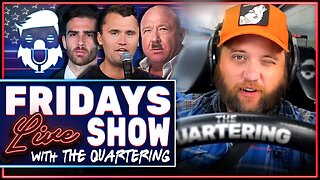 1:02:53
1:02:53
The Quartering
4 hours agoMAGA Kid Kidnapped, Hasan Piker Meltdown, Vivek Fights For Alex Jones & More
129K45 -
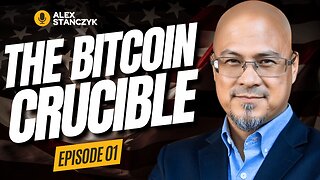 32:49
32:49
Simply Bitcoin
1 day ago $1.83 earnedBitcoin Crucible w/ Alex Stanczyk | EP 1
36.4K -
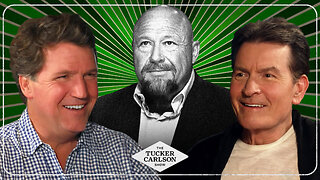 1:57:37
1:57:37
Tucker Carlson
4 hours agoCharlie Sheen’s Craziest Hollywood Stories and Why He Refuses to Believe the Official Story of 9/11
60.2K63 -
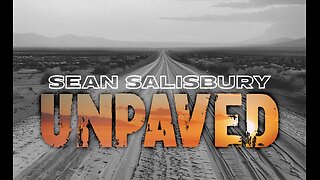 1:33:12
1:33:12
Sean Unpaved
5 hours agoRyder Cup Tee-Off, CFB's Week 5 Madness, & the NFL's Win-or-Wilt Week 4
31.9K1 -
 2:07:01
2:07:01
The Culture War with Tim Pool
6 hours agoWho Really Killed Charlie Kirk? Truth Behind Kirk Assassination | The Culture War with Tim Pool
244K238 -
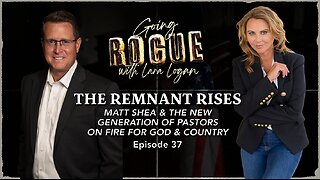 1:25:28
1:25:28
Lara Logan
15 hours agoTHE REMNANT RISES: Matt Shea & The New Generation of Pastors on Fire for God & Country | Episode 37
42.8K4